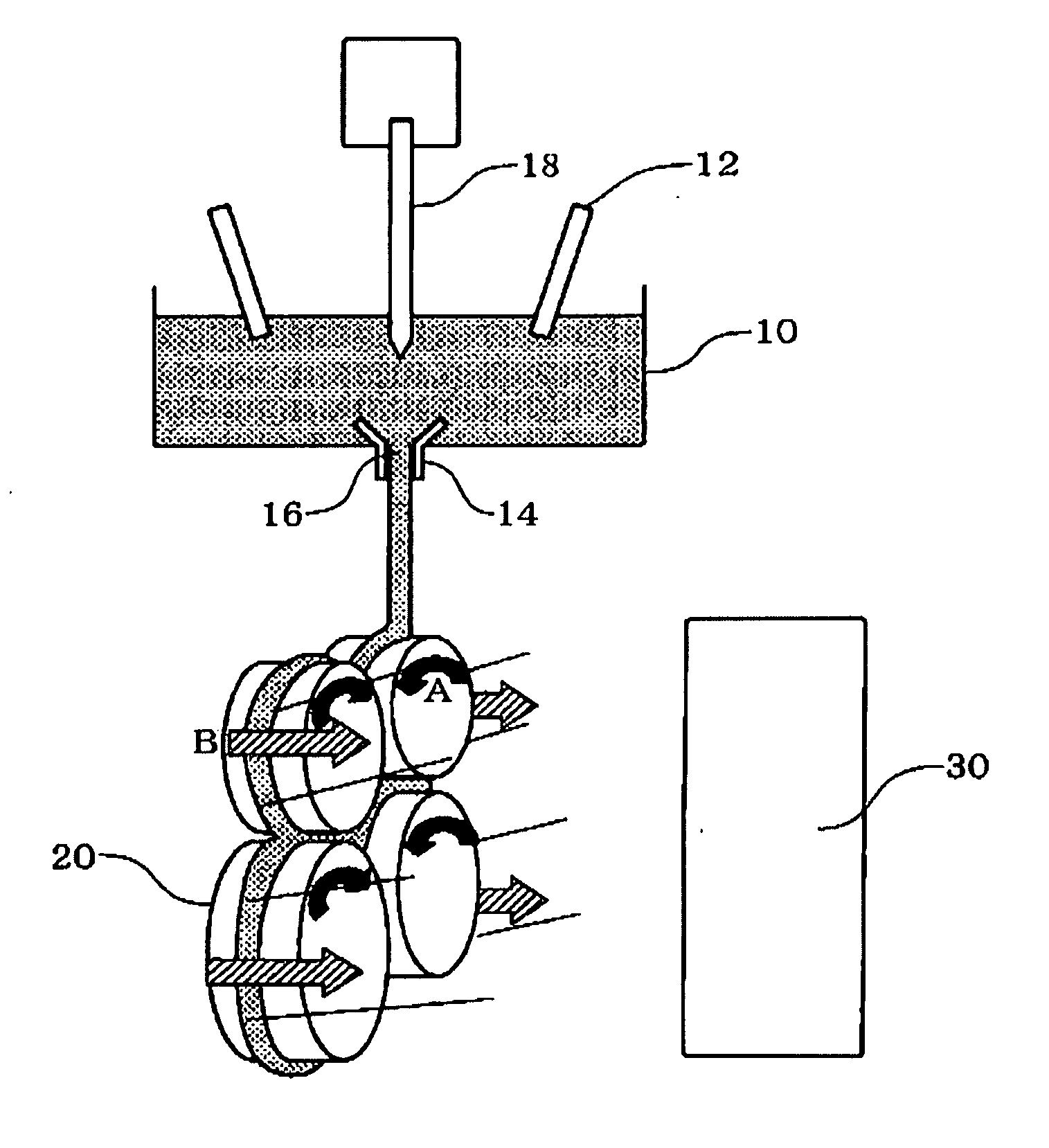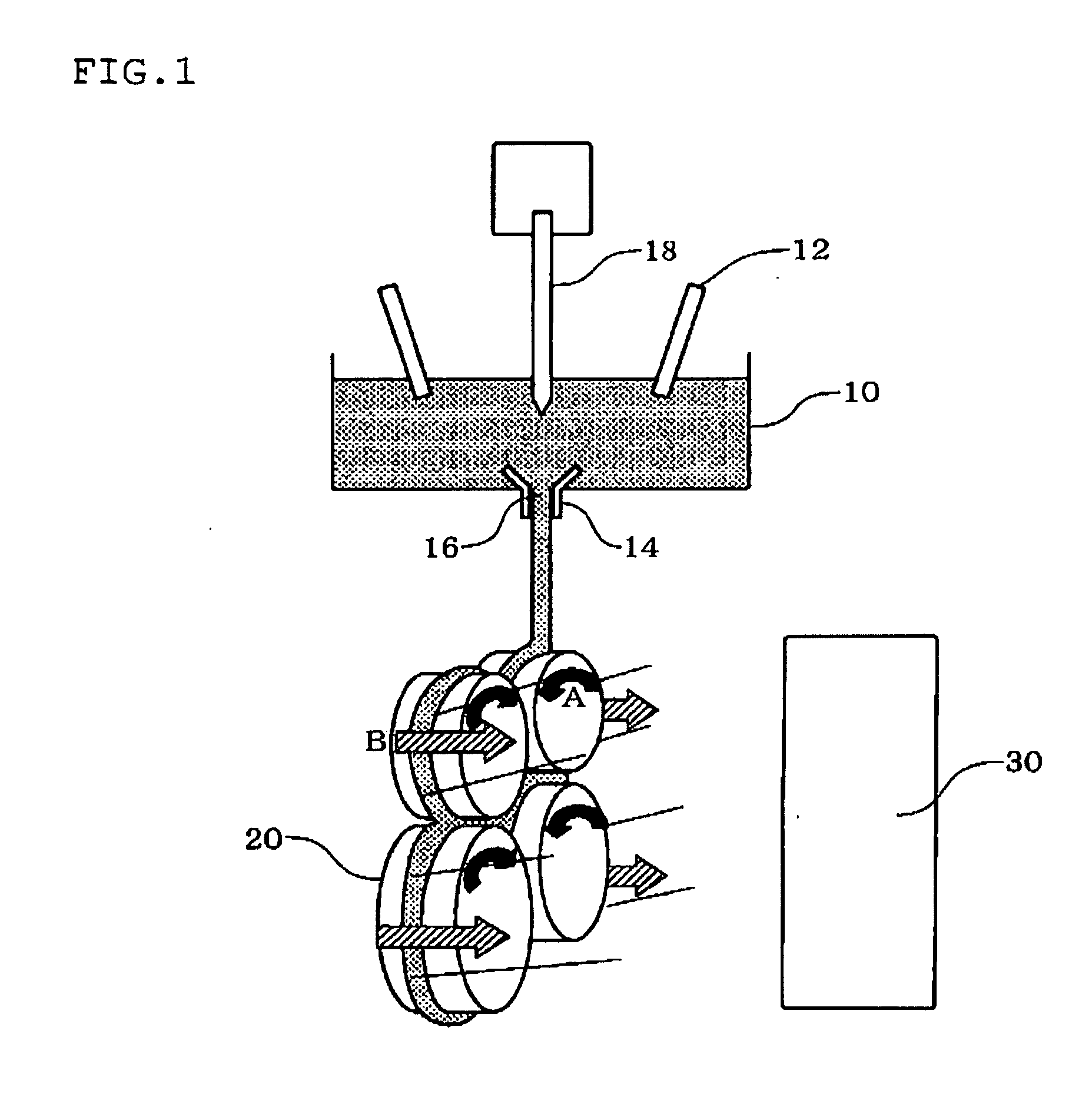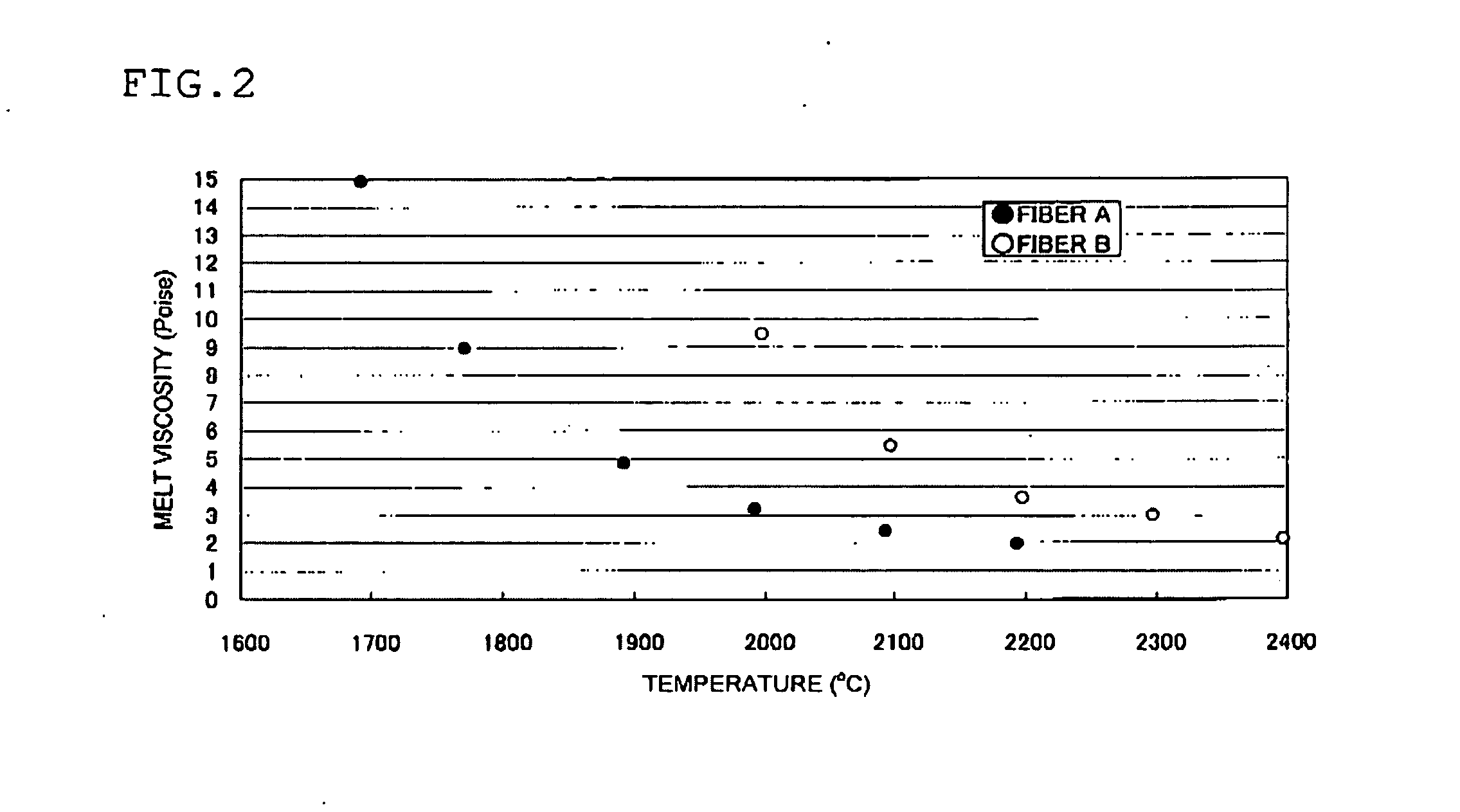Method of producing biosoluble inorganic fiber
a biosoluble inorganic fiber and fiber technology, applied in glass making apparatus, manufacturing tools, instruments, etc., can solve the problems of difficult stably producing fibers, difficult to obtain fibers having a small fiber diameter, etc., and achieve the effect of stably producing biosoluble inorganic fibers
- Summary
- Abstract
- Description
- Claims
- Application Information
AI Technical Summary
Benefits of technology
Problems solved by technology
Method used
Image
Examples
experiment 1
[0051]Raw materials for fibers A and B having a composition shown in Table 1 were heated and melted at 1700 to 2400° C. in a container by applying an electric power of 0.15 kW / kg to electrodes to obtain a melt having a melt viscosity of 1 to 15 poise. FIG. 2 illustrates the relationship between the melt viscosity of the fibers A and B and the temperature.
[0052]The resulting melt was supplied to a rotor rotating at an acceleration of 74, 115, or 259 km / s2 via an orifice of the container at a speed of about 300 to 600 kg / h. The amount of the melt supplied was adjusted within a certain range using a control rod. Fibers were produced while blowing air around the rotors. FIG. 3 illustrates the relationship between the melt viscosity and the average diameter of the resulting fibers A and B.
[0053]The fibers A produced at a melt viscosity of 3 poise and an acceleration of 259 km / s2 had a low flakes (shot) content of 40 to 50%.
[0054]The following measuring methods were used in the experiment...
experiment 2
[0058]Fibers A were produced in the same manner as in Experiment 1 at a melt viscosity of 5 poise and an acceleration of 259 km / s1. In Experiment 2, a change in the amount of the melt supplied to the rotor with time was measured with or without the control rod. The rod was lowered as the diameter of the hole of the orifice increased. The results are shown in FIG. 4 and Table 2. The height of the rod is also shown in FIG. 4. It was confirmed that a change in the amount of the melt supplied to the rotor could be suppressed by utilizing the rod, whereby the fiber diameter was reduced.
TABLE 2Amount of meltStandardsupplieddeviationFiber diameterRod was used340-550363.5-3.9Rod was not used330-6701203.5-5.1
experiment 3
[0059]Fibers A were produced in the same manner as in Experiment 1 at a melt viscosity of 5 poise and an acceleration of 259 km / s2. In Experiment 3, the supply temperature and the viscosity of the melt were measured while changing the power applied to the electrodes. The results are shown in Table 3.
TABLE 3Fibers AFibers BAppliedSupplyMeltingSupplyMeltingpowertemperatureviscositytemperatureviscosity(kW / kg)(° C.)(poise)(° C.)(poise)0.10163117.4187714.00.15167814.0191911.80.20172411.319619.90.2517709.120038.40.5020023.522133.80.6020952.422972.90.7021881.723812.2
[0060]Inorganic fibers produced by the method according to the invention can be used for various applications as a heat insulator or an alternative to asbestos, for example.
PUM
| Property | Measurement | Unit |
|---|---|---|
| Temperature | aaaaa | aaaaa |
| Temperature | aaaaa | aaaaa |
| Material consumption rate | aaaaa | aaaaa |
Abstract
Description
Claims
Application Information
 Login to View More
Login to View More - R&D
- Intellectual Property
- Life Sciences
- Materials
- Tech Scout
- Unparalleled Data Quality
- Higher Quality Content
- 60% Fewer Hallucinations
Browse by: Latest US Patents, China's latest patents, Technical Efficacy Thesaurus, Application Domain, Technology Topic, Popular Technical Reports.
© 2025 PatSnap. All rights reserved.Legal|Privacy policy|Modern Slavery Act Transparency Statement|Sitemap|About US| Contact US: help@patsnap.com



